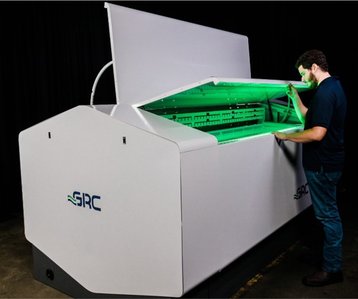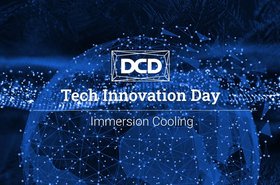If you’d suggested 20 years ago that the best way to keep servers cool was to keep them immersed in liquid, most people would’ve thought you’d taken leave of your senses.
But when Green Revolution Cooling (GRC) unveiled its first immersive cooling series of products just over ten years ago it immediately proved the concept. The technology didn’t just help improve server performance and cut cooling costs: it enabled server performance to be maxxed out while still slashing cooling costs.
Now, GRC has unveiled the Series 10, a completely new line that has been designed from the ground up.
“It’s not just a simple redesign, but a real re-imagination of everything we've done before really taking into account the lessons learned that we've had from 12 years of product installations and service with our customers,” said Ben Smith, chief product officer at GRC, presenting the new technology at the recent DCD>Tech Innovation Day.
Immersion cooling offers a number of benefits, he continued: the coolant is safe and environmentally friendly, it makes heat re-use more efficient and effective, it can help improve space usage in server halls, and server voltages (and therefore performance) can be maximally increased without the cooling and over-heating issues frequently entailed by conventional cooling.
“GRCs innovation is the agitation of the fluid in addition to the natural convection properties that really add to, and enhance, the density and cooling capabilities,” said Smith.
The Series 10, he continued, is a completely integrated system, more powerful, and taking up a much smaller footprint than previous immersion cooling systems. As a result, it looks smarter, much less modular and much more modern.
“Historically, the CDU, the coolant distribution unit, was comprised of separate components that needed a little space around them for doing maintenance, piping and so so. The space-consuming nature of that and the visual nature of it was a little bit disconcerting to customers.
“So, we built a completely integrated system where the coolant distribution, the racks, the containment – which is vitally important – and the distribution module in the middle, while they’re big, individual components, are easily integrated into a single system at the customer site,” said Smith.
“The CDU is twice as powerful on, probably, just 40 percent of the footprint of our previous generation CDU... The fact that it will merge directly up to the racks indicates that the serviceability of this will all be in the front, although you can remove some side panels as well – that’s the only place you need any extra space,” said Smith.
Not only that, but it has plenty of built-in redundancy, too, including redundant pumps, redundant heat exchangers and it’s even possible to put a second CDU into the unit for total redundancy, said Smith.
“We have 7.5 horsepower, redundant pumps inside as primary and secondary pumps. The primary pump can handle the entire load, but in our entire history we’ve replaced around just two pumps.
“The coolants we use and the stress we put on pumps is minimal, so they just last but nevertheless, we have the redundant pumps and then we we have an intelligent controller,” said Smith.
“And if you need super high-density racks, you can have two racks with a CDU and a distribution module. Then, later on, if you realised you actually have some extra capacity or you know, up front, that your densities are going to be a little lower you can make it a four-rack system by simply snapping two other racks right onto the end,” Smith added.
Leakage
But what about the fear of leakage?
“Any sort of leak or issue with the coolant needs to be contained. Historically, we’ve relied on third-party containment products, which tend not to be well integrated,” admitted Smith. “Either it takes extra space or you use ‘bladders’ that need to be hooked up.
But with the Series 10, it’s fully built-in, automatic and comes as standard. “Each component as its own containment area, but they connect together for overflow,” said Smith. In this way, if anything were to happen with one component, it would easily be contained.
The racks, meanwhile, offer flexible power densities up to 100kw per rack. “Even with a four-rack system, you could to 100kw with chilled water. We focus on warm water – we’re getting away from chilled water – but it’s viable for customers who need super-high densities and have a chilled water loop already that can be snapped in,” said Smith.
Meanwhile, the Series 10 also provides space in the front of the rack to mount networking equipment, making it more integrated.
“This is our 10th generation product, and we're very proud of that history. But as you can see, what we've done with this reimagination is doubled the performance. And we’ve done that in half the footprint of our prior generation products,” said Smith.
Hear more from GRC’s Ben Smith by watching the entire presentation at DCD>On demand. And learn more by visiting GRC’s website.


